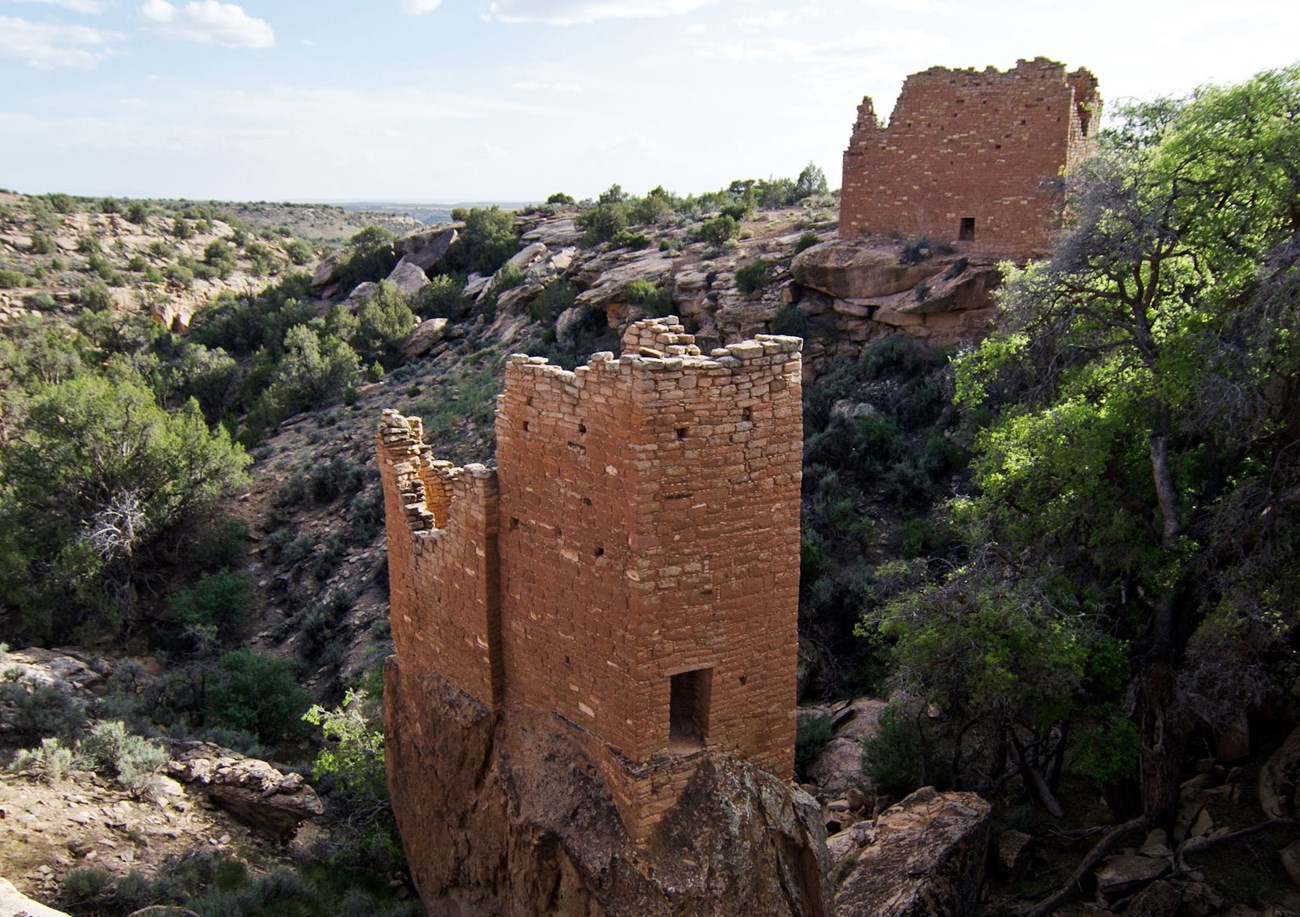
NPS photo / Sierra Coon Holly is Hovenweep’s most popular outlying unit. Whether it’s because of the petroglyph panel or the impressive architecture, visitors are drawn to this small community. Holly is the only outlying unit accessible via trail from the Square Tower Group. Visiting HollyGetting ThereStop at the visitor center for updated road conditions, directions, and a map. The Holly site is located down an unimproved BLM road off of County Rd 10, 4 miles north of Hovenweep’s visitor center and campground. High clearance vehicles are strongly recommended. Hiking is required to see Holly. There is a short trail that leads from the dirt parking area, about 0.44 mile (0.7 km) roundtrip. A longer, primitive trail that leads from Hovenweep’s campground in the Square Tower Group is 7miles (11 km) roundtrip. Available ServicesThere is no rest room, campground, visitor center, trash receptacle, or water available at the Holly site, so come prepared. All of these services are available at the visitor center. What’s in a NameEarly archeologists named the Holly site after James Holly, a local rancher and trading post owner. In 1894, Holly acquired land in McElmo Canyon near the Colorado/Utah border and set up his homestead and small trading post. Holly hosted archeologists exploring the Hovenweep area in the early 1900s, allowing them to use his land to camp and access sites, which led to the Holly site being named after him. The trading post Holly operated eventually became the Ismay Trading Post, which operated along McElmo Canyon for almost 100 years. Features & ArcheologyThe structures at Holly were first documented by T. Mitchell Prudden in 1903. They are centered around the head of the north fork of Keeley Canyon and include what remains of eight masonry single- and multiple-room structures including three towers, several possible kiva depressions, a rim dam and a talus retaining wall. The Holly site was occupied primarily during the Pueblo II – III period, A.D. 900 to 1300. Many of the masonry structures at Holly were built on large boulders detached from the canyon rim. Perhaps the most impressive is Holly Tower, a two-story, two-room masonry tower built on a very large and boulder within the drainage at the canyon head. Its foundation follows the contours of the boulder so that the tower almost appears to grow out of the boulder. Access to the tower appears to have been by the use of steps cut into the boulder which lead to the tower’s door. 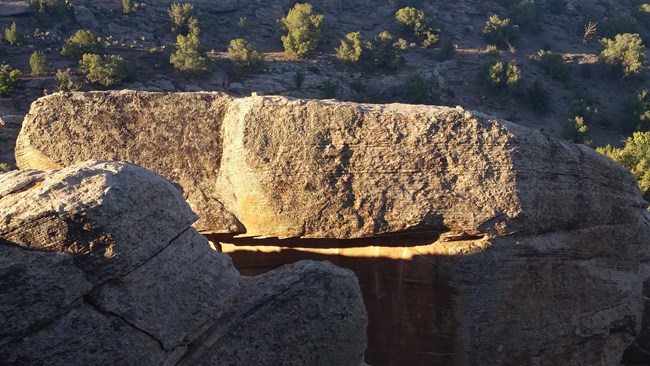
NPS Photo / Austin Tumas Solstice Petroglyph PanelHolly’s petroglyph panel is the only petroglyph panel visible on trail in the park. The panel is often called the sun panel or solstice panel because it appears to mark the summer solstice using sunlight and shadow. Just after sunrise on the solstice, two beams of light hit the Holly Unit’s petroglyph panel and bisect the carved spirals and circles. As the sun continues to rise, the entire panel is lit by sunlight. The panel’s location tucked between two large boulders allows this to only happen on and around the summer solstice. It’s a marvel of nature and man – the boulders are there naturally, and the ancestral Puebloans who lived here were observant enough to notice and mark this special occasion. Life at HollyThe ancestral Puebloans living at Holly supplemented the food they collected from hunting and gathering by farming. They grew corn, squash and beans in terraced plots down the slope of the drainage, in canyon-bottom alluvial plots, and in fields on the mesa top utilizing dry-land farming techniques. There also is evidence that the Puebloans used water control devices like check dams and water reservoirs to help in farming. Besides farming, the Holly residents would have been involved with making pottery, clothing, and stone tools to use for hunting, building and food preparation. Part of the ParkThe Holly unit was included in the 1923 Presidential proclamation that designated Hovenweep as a national monument. Other Places to GoHovenweep's Home BaseSquare Tower Group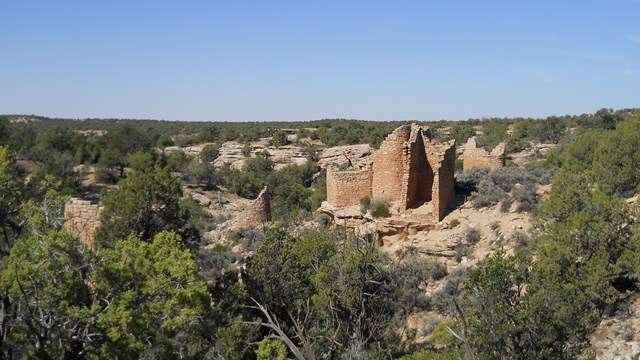
Cutthroat Castle
Hovenweep's northernmost and hardest to reach unit. 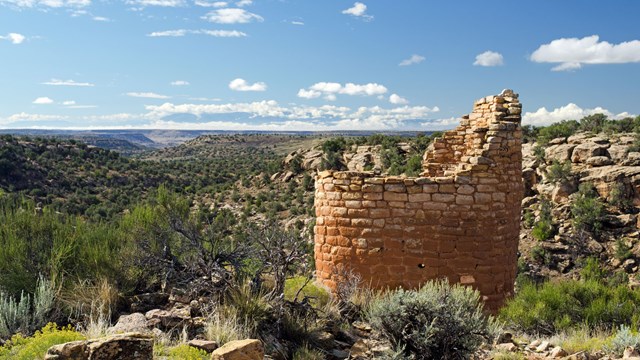
Horseshoe & Hackberry
Horseshoe and Hackberry are smaller outlying units of Hovenweep. 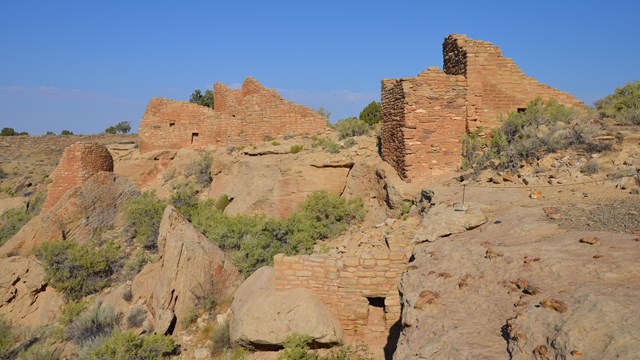
Cajon
Cajon is Hovenweep's southernmost and least visited outlying unit. |
Last updated: April 18, 2025
